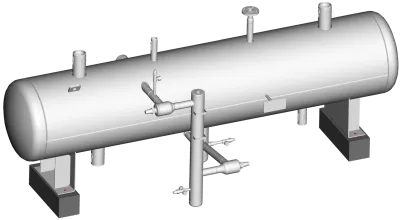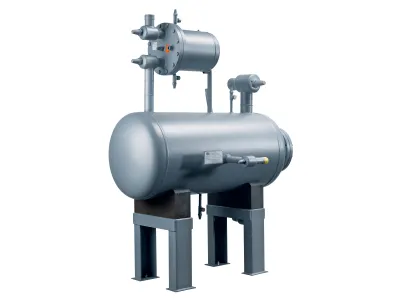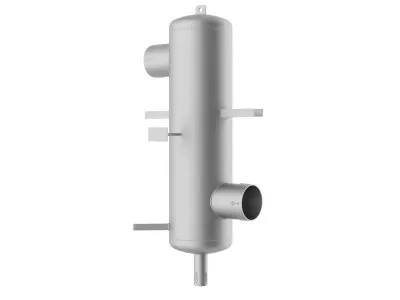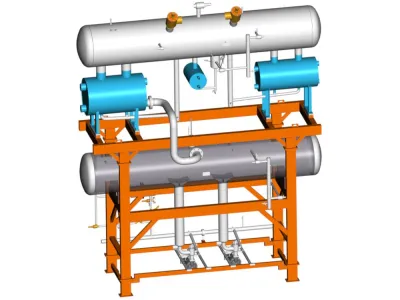Liquid separator for ammonia
The liquid separator
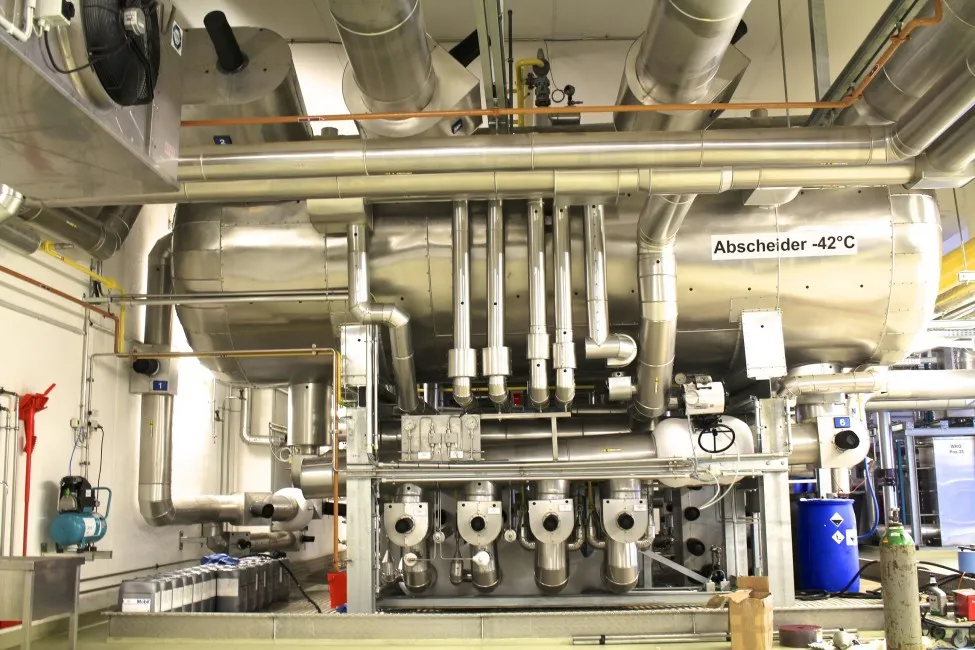
Is a mostly horizontal pressure vessel with a large storage volume, which is mainly used in refrigeration systems with pump circulation.
Larger ammonia refrigeration systems usually use flooded evaporators with multiple refrigerant recirculation. Due to the forced circulation by means of refrigerant pumps, large distances between the refrigeration center (engine room) and the consumers can be bridged.
The circulating number n indicates the ratio of the amount of liquid delivered by the pump to the amount of refrigerant evaporated in the evaporator at full load.
As the refrigerant speed increases, the heat transfer coefficient from the refrigerant to the evaporator inner wall increases sharply. He reaches at n = 2. , , 3 a maximum, which slowly decreases at higher circulation (s) again. Because of the uncertain pressure drop determination in the evaporator circuit n = 3 to 4 is recommended.
For the reliability of such systems, a liquid separator is of crucial importance. The separator is the link between the compressor and the evaporator circuit and thus divides the refrigeration cycle. In it, on the one hand, the liquefied refrigerant is released from the condenser and separated the non-evaporated refrigerant from the evaporator.
The separator collector thus has essentially the following tasks to fullfill
On the one hand, it must provide and collect sufficient liquid refrigerant for all operating states of the refrigeration system.
On the other hand, the non-evaporated liquid refrigerant fraction from the liquid-vapor mixture, which flows back from the evaporator circuit.
The proportion of liquid refrigerant in the separator is very much influenced by the load on the evaporator. The load demand in the evaporator circuit often change so fast that they can not be intercepted by the control.
As the load in the evaporators is reduced, the liquid will boil less and the evaporators will take up more liquid NH3, as the refrigerant pumps will continue to pump evenly, thus decreasing the liquid level in the trap.
Increasing load on the consumer or evaporator, due to increased heat input, creates more refrigerant vapor. As a result, the evaporator contains less liquid refrigerant. The backflowing liquid refrigerant now ensures an increase in the level in the separator.
The following criteria should be considered when dimensioning the separator
- Ensure a sufficient volume of the container above the liquid to ensure the separation of the liquid droplets flowing back from the evaporator circuit.
- A sufficient distance between the entry of the return line from the evaporator circuit and the suction line connection for the compressor circuit at the separator.
- A sufficient total volume of the separator, to compensate for the fluctuating fluid absorption of the evaporator, due to changed load, or during defrosting.
- Due to the low solubility of refrigeration oils with ammonia, oil settles at the lowest point in the separator. To remove it from the separator, it is recommended to design an oil sump with appropriate oil return.
- Ensuring a minimum fluid level to guarantee a cavitation-free pump operation. The eddy formation at the inlet or the suction pipes to the refrigerant pumps must be avoided at all costs.
Conclusion: The liquid separator is the central organ in the industrial NH3 refrigeration system with pump operation. The design, calculation and trim arrangement is crucial. An incorrectly dimensioned compressor is interchangeable, a wrong sized liquid separator is fatal and can be replaced only by very high effort. Thus one should know very well the requirements of the plant, also with regard to possible plant extensions.

